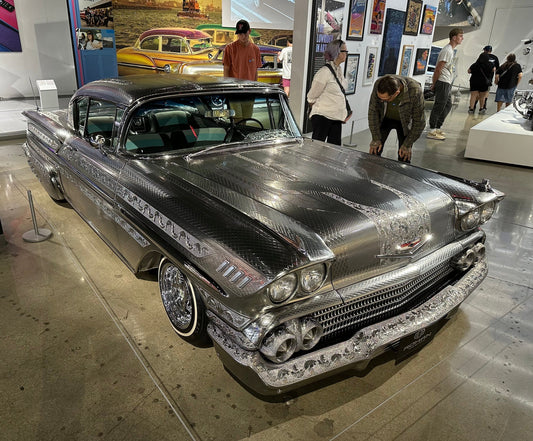After having gotten the perfect idea of how to build my own power generating station from engineer and audiophile, Doug Goldberg—connect a sine wave oscillator to an audio power amplifier—the next challenge would be a bit of a ball buster.
Audio power amplifiers aren't that hard to design and build. While at PS Audio and Genesis Technologies, I had designed and built any number of them. These power amplifiers were designed to drive loudspeakers. 8Ω and 4Ω loads at wattages that ranged from several watts to hundreds of watts.
To do that, a power amplifier has to produce a certain amount of voltage at its output. That voltage is what drives the loudspeaker, powering the coil of wire that moves back and forth the speaker's woofer and tweeter. To maintain that voltage that is driving the speaker, we need current (motive force) that we express in watts. It is the combination of voltage and current that together we label an amplifier as having 200 watts, or whatever.
The typical voltage out of a power amplifier, even a decent sized power amplifier of, say, 200 watts, is about 40 volts. So, if you have a power amplifier that outputs 40 volts and you place that voltage into an 8Ω speaker, you can confidently say you'll get 200 watts. Cut the speaker's impedance in half, to 4Ω, and that same output voltage would now give you 400 watts.
Simple, right?
Well, yes, unless you, like me, needed to build a power amplifier that could produce upwards of 230 volts. Yikes! Even the US line voltage out of our home's wall socket is half that, at 120 volts, that's a huge demand. And, it's from a power amplifier I did not have.
Let's do the math. A power amplifier producing 120 volts rms into an 8Ω load is the same as an 1,800 watt amplifier. If that wasn't bad enough, try this on for size. In 1997, the only reasonable power transistors available to me with enough power to build an amplifier were voltage limited to around 80 volts. Try running them at a higher voltage and poof they die.
Yikes.
More thinking. More late night walks. Think. Calculate. Stress.
The biggest amplifier I could imagine building with any practicality was around 500 watts into an 8Ω load. That was pretty much the limit of what I could do. Unfortunately, that only produced a little over 60 volts—half of what I needed.
Half. Think about it. Half.... 2 x 60 equals....120 just what I need. How could I get double the voltage?
Years earlier, PS Audio produced a little power amplifier called the 2C. It was a cute little 60 watt per channel stereo amplifier housed in a breadbox sized chassis. We sold tons of them. Great sounding, reliable, and easy to build. The 2C had a rather novel (at the time) feature. A switch on the rear of the unit that converted the little stereo amplifier into a much more powerful mono amplifier.
How did it do that?
By flipping the phase of the input signal. It's the same idea we find in a balanced XLR cable. Two conductors inside a balanced cable—one out of phase with the other. And between the two conductors, what do you get? Double the voltage.*
*This is because as one signal is going positive, the second signal is going negative. Think of two cars each traveling at 60 mph. If they move in opposite directions, then the speed between them is doubled to 120 mph.
Bingo! Build a 500 watt stereo power amplifier and place one channel out of phase with the other, thus doubling the voltage. Now, we have a power amplifier that can produce 120 volts rms.
Just what we need.










